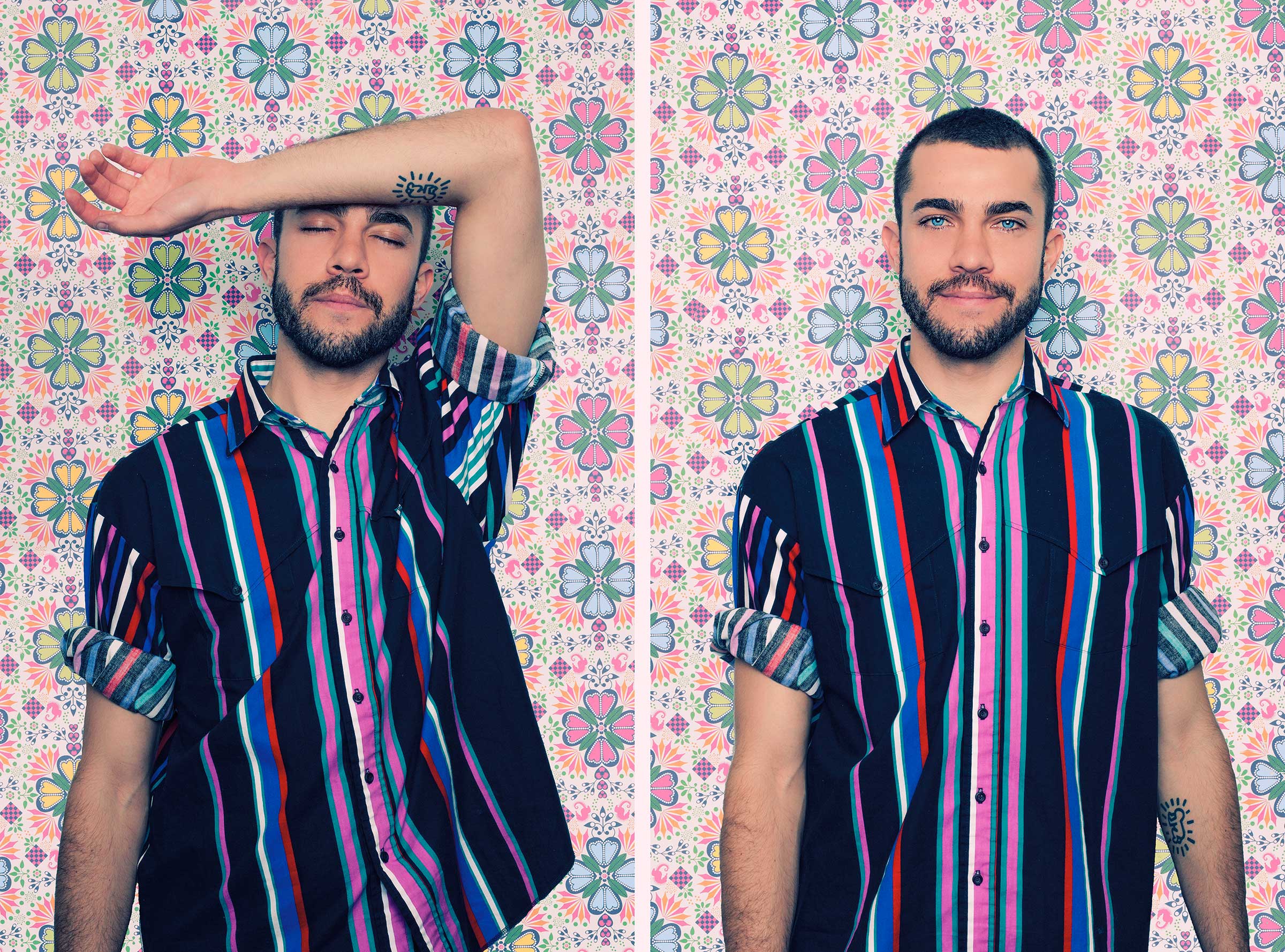
Alex F.
SAN DIEGO, CALIFORNIA
How would you identify your sexuality?
Queer/gay.
What do you think of your portrait?
Iwas and continue to be thrilled with my portrait. I have used it on many occasions as my headshot—so often that a friend once commented that I needed to take another picture because I had worn that one out! In response, I recently asked Ash for another series of portraits.
I love the colorful background that I selected, and I still have the paper hanging in my living room.
Describe your coming out. Are you coming out in some way by participating in this project?
I came out to my family and friends after I graduated from high school. I had some hiccups with family and friends around acceptance, but I generally experienced a sincere and appreciated response to coming out.
It’s pretty widely known that I am gay—my Instagram handle is @fagalho, after all, queering my last name, Fialho—so this project wasn’t too much of a coming out, other than to people who don’t know me.
The fight required to love who we want—to be gay—is a process, at times immensely painful.
Have you ever experienced discrimination based on your gender or sexual orientation?
Personally, my parents supported me in countless ways for the first eighteen years of my life; although when I told my mom that I was gay, she cried, fearing for my safety and probably mourning some of her lost dreams. My father and I didn’t speak for weeks after I came out to him. They are both very supportive now. I bring this all up to say that the fight required to love who we want—to be gay—is a process, at times immensely painful.
If you could change one thing about mainstream society to improve the lives of LGBTQ+ people, what would it be?
I think I would change how LGBTQ+ people often feel the need to perform, or overcompensate as a result of the trauma from growing up in a heteronormative society.
Describe how this project has affected you, both personally and as a member of the LGBTQ+ community as a whole.
in the world, and it implies that there is some identifiable marker, phenotype, or facial expression that relates to sexual identity that can be read as gay. (Admittedly, I often think a man with a well-moisturized—or even a little Botoxed-face—might be the closest thing to a “gayface!”) Jokes aside, taking part in the project meant claiming my identity in a powerful and straightforward way for an audience outside of the one I know.
Who are your LGBTQ+ role models?
Rather than a typical celebrity as role model, I think the queer people I’ve celebrated in my life as friends, mentors and creative inspirations mean the most. For example, Buzz Bense (1949–2016), an ardent activist, seasoned performer, and sex-positive force in San Francisco throughout the ongoing AIDS crisis.
My dear friend and mentor Dan Cooney has meant a lot to me in recent years.
Queer authors and artists—too many to list definitively—have also been incredibly influential: Keith Haring, Richard Meyer, Lyle Ashton Harris, Kia LaBeija, Douglas Crimp, Gregg Bordowitz, Chloe Dzubilo, Viva Ruiz, F.lix Gonz.lez-Torres, and David Wojnarowicz come to mind, among so many others.